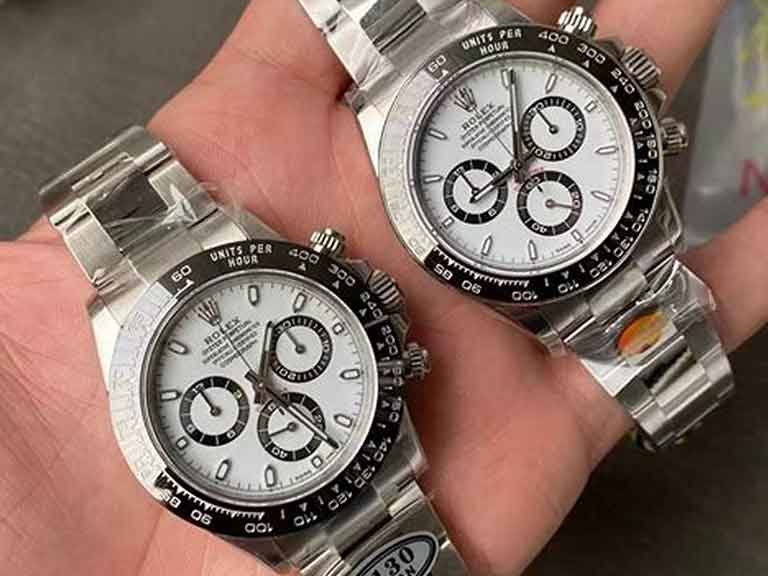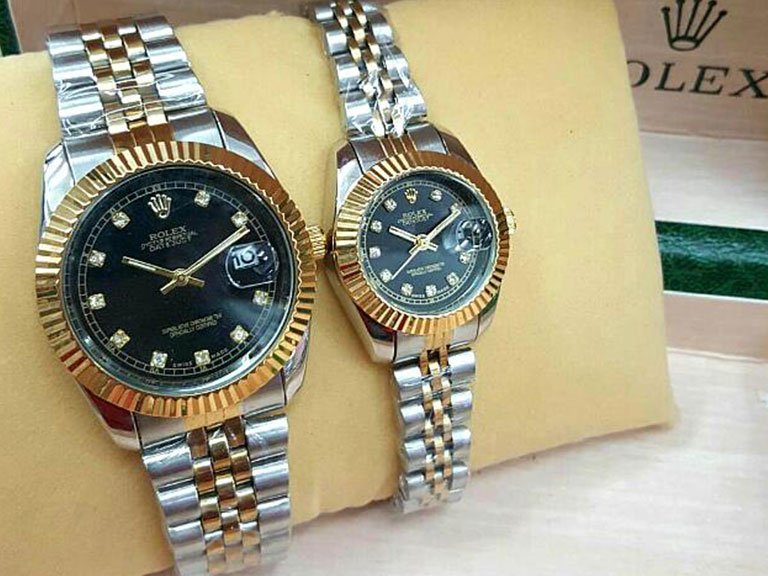

In recent years, a notable trend has emerged in the world of high-end watch collecting—More watch collectors are turning to super clone watches. This change isn’t merely about affordability; for some enthusiasts, the choice goes far beyond “can’t afford the real thing.” Instead, they embrace replicas as a form of rational consumption—whether for test-wearing unconventional models, filling gaps in their collection, or using them as functional stand-ins. These high-precision reproductions blur the line between imitation and authentic timepieces.
This article examines the engineering breakthroughs and shifting priorities driving this movement—revealing why super clone watches are not just alternatives, but legitimate contenders in contemporary horological culture.
These watches replicate the functional mechanisms, material composition, and even the weight distribution of genuine timepieces. Visually, they are difficult to distinguish, and some can even mimic Rolex’s 70-hour power reserve Caliber 4131 chronograph movement. Today, super clone watches have reached a level of craftsmanship and complexity comparable to entry-level luxury watches.
Fake watch vs real exterior comparison: On the left is the Rolex Genuine, on the right is the Clean Factory super clone watch.

The differences between regular replica watches and super clone watches lie in price, material quality, and movement performance.
Regular replica watches are usually cheaper than super clones but fall short in quality.They are typically made from standard 316L stainless steel, with mineral glass crystals instead of sapphire. The ceramic bezel is often replaced with painted or colored metal. They typically use cheap quartz movements or low-quality mechanical movements, with rough finishing that makes them easily identifiable as fakes at first glance.
In contrast, super clone watches are built as 1:1 replicas of the original, using materials like 904L steel, sapphire crystals, engraved rehauts, and more. Features like the Cerachrom ceramic bezel on the Rolex Submariner, Liquidmetal scales on Omega, and even platinum-filled bezels are faithfully reproduced. These watches are powered by Swiss clone movements with fully functional features — such as the working chronograph on a Rolex Daytona replica. Without removing the case back or using a 30x magnifier, it’s nearly impossible to tell them apart from the genuine version.
Why has this shift happened? While price is still a factor — for example, comparing a $7,000 Rolex Oyster Perpetual with an $800 Clean Factory clone — the appeal goes much deeper. Collectors are drawn by several key reasons:
As Rolex Daytona prices skyrocket 300% above retail and Patek Philippe waitlists stretch beyond a decade.
Top-tier clones, like those from Clean Factory, VS, or QF, replicate 904L stainless steel, genuine Swiss-grade movements (e.g., Shanghai 3230 clones mimicking Rolex’s Calibre 3230), and even identical ceramic bezel finishes with sub-0.1mm precision.Unlike low-end fakes, these super clones are often impossible to distinguish without professional tools.
A genuine Rolex Daytona can cost $30,000+, while a Clean Factory super clone offers 95% of the technical accuracy at 2% of the price. For collectors who value aesthetics and mechanics but not brand prestige, this is a logical trade-off.
Luxury brands are making their watches harder to counterfeit—but super clone makers are advancing just as fast. VSF’s Omega clones now use real anti-reflective coatings, while ZF’s Patek Philippe models feature functioning Geneva stripes. As authentication technology improves, so do clones.
Unlike rigid luxury brands, clone manufacturers allow unique modifications—such as Frankenstein builds with genuine parts or rare dial variations. This attracts modders and collectors seeking exclusivity.
Many super clone buyers also own authentic pieces but use clones for travel, risky environments, or testing aesthetics before buying genuine. This pragmatic approach redefines traditional watch collecting.
| Feature | Genuine Rolex | Super Clone Watch |
|---|---|---|
| Price | $8,000–$50,000+ | $500–$1000+ |
| Material | 904L Steel, Gold, Rose Gold, Platinum | 904L Steel, Ceramic , Gold-plated(May fade) |
| Movement | COSC Certified | Swiss Movement Clone |
| Water Resistance | 100m–300m (real) | High-end replica watches are technically waterproof, but it’s not advisable to wear them for swimming. |
| Resale/Collectibility | Yes | No |
Truth: Modern high-end replicas use precision CNC machining techniques.
Truth: Many genuine watch collectors actually prefer super clones.
Truth: Top-tier factories have solved durability issues.
Truth: Top-tier versions now achieve over 95% similarity.
Truth: They serve different needs.
For certain collectors, it’s absolutely worthwhile. Super clone watches allow you to experience nearly indistinguishable luxury aesthetics at a fraction of the cost, while eliminating the daily anxiety of potential loss or damage to genuine high-end timepieces—making them excellent functional alternatives.
However, they hold no investment or resale value, nor do they carry the prestige or collectible status of authentic watches.
Super clone watches are essentially precise replicas of authentic timepieces, constituting intellectual property infringement, and their sale is illegal. However, personal purchase and use of super clone watches remain legal. Be aware that super clone watches may be seized by customs when imported internationally. If you own a replica watch, do not attempt to resell it.
The price mainly depends on the movement and materials, generally ranging from $500 to $1000+, while models with 18K gold plating or diamonds often exceed $1000.
Rolex super clones have now reached exceptionally high standards, achieving over 95% accuracy in replication. These 1:1 replicas are produced using original molds from genuine watches, incorporating high-quality materials and reliable movement performance. Only under high-magnification inspection can subtle differences be detected. This advanced replication technology explains why an increasing number of collectors are embracing these super clone versions.
The most common super clone models include Rolex (Submariner, GMT, Daytona), Audemars Piguet (Royal Oak, Royal Oak Offshore), and Patek Philippe (Nautilus, Aquanaut). Among these brands, Rolex remains the most frequently replicated watch in the super clone market.
Contemporary replica watches have achieved near-indistinguishable technical sophistication, particularly in the high-end ‘super clone’ tier, Certain models can even bypass specialized authentication equipment.
Regular replica watches typically last 1-2 years, while high-quality super clones with proper maintenance can exceed 10 years of service.
Yes, some replica watch dealers offer warranty services on their products. Alternatively, you may consult professional watchmakers who specialize in servicing imitation timepieces – particularly those familiar with Dandong/Shanghai clone movements construction.
High quality super clone watches are virtually indistinguishable from genuine pieces at normal social distances. Only magnification reveals subtle discrepancies.
On all orders above $50
30-day free replacement
Support Worldwide Shipping
Lifetime 100% technical support
We are the most professional high-end replica watch seller in China. We have professional watch knowledge and perfect after-sales service. We only sell the top replica watches.
WhatsApp us



We also provide you with $50 worth of commercial insurance to ensure that your watch is delivered to you safely.